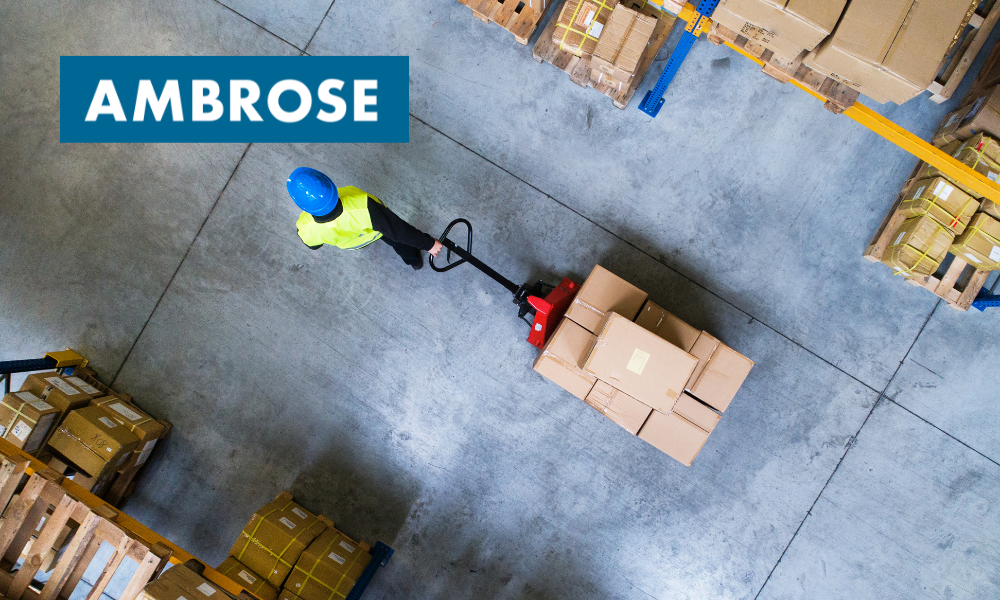5 Ways to Make Warehouse Safety a Part of Your Culture
When it comes to your business, warehouse safety should never be an afterthought. Warehousing combines fast-paced operations and environmental hazards that range from the storage of hazardous chemicals to the movement of heavy objects using forklifts. Employee workplace injuries and fatalities can occur from overexertion, heavy lifting, being struck by powered trucks, trip hazards, slip and fall accidents and more.
The Occupational Safety and Health Administration (OSHA) demands that warehouse workers be fully aware of all safety hazards in the workplace and holds employers accountable for a lack of personal protective equipment, signage and hazard communication, hard hats, fire extinguishers, and more safety standards. Here are 5 ways warehouse managers and engineers can be proactive in creating a safe warehouse, work environment, and overall company culture.
1. Proper and consistent material storage
Material handling equipment and storage safety starts with the proper labeling of all hazardous materials and the separation of non-compatible materials as dictated by the chemical’s MSDS sheet to avoid fire hazards. All materials should be properly stored on a level surface or on pallets, with particular attention paid to drums and barrels which should be stacked symmetrically and with the bottom tier choked to prevent rolling.
A critical safety issue with material storage in a warehouse environment is the stacking height of boxes, crates, and other packaged material. To create a safer warehouse culture, help employees observe height limitations when stacking materials by painting walls or posts with stripes to indicate maximum racking heights for quick reference.
2. Loading dock and forklift safety
Make sure only essential personnel are allowed to work on loading docks and with automatic palletizers and that only trained and certified forklift operators are operating all lift trucks. The loading dock is a great place to implement the practice of over-communication among co-workers and the hanging of safety signage that can prevent fatal injury while on the warehouse floor. Consider the following forklift and loading dock safety reminder signage:
- Avoid overloading lift trucks to prevent tipping
- Adjust the load to the lowest position when traveling
- Center loads on the forks as close to the mast as possible
- Wear a safety vest to remain highly visible during forklift operation
3. Lifting and ergonomics
Most businesses need to palletize more than one SKU or product type using the same palletizing cell. It is also possible that your packaging and palletizing needs will change over time. This means you will want to consider how well your palletizer can adapt to new requirements via programming and handling capabilities. Rates, weight, and reach (for robotic applications), must all be considered. Ambrose typically scales their system designs to accommodate for future growth opportunities, or physical capabilities of system, by factoring 25% or more of the projected current needs.
4. Handling hazardous materials
Hazardous materials communications must be an ingrained part of the warehouse culture. Any employees who may encounter toxic chemicals, potential hazards or dangerous materials should have regular HAZMAT training. To make the safe handling of hazardous materials a part of the workplace culture, assign one plant engineer or floor supervisor to oversee the written protocols and the scheduling of HAZMAT training on a regular basis.
Consider Level 1 HAZMAT training for employees who work directly with hazardous materials, and secondary training for all employees to be aware of the possibility of a chemical spill, clean up procedures and what to do if they suspect the workplace has been exposed to a dangerous or toxic substance. This is also a good time to train employees on fire safety and the operation of fire extinguishers.
5. Material movement and conveyor safety
Warehouse safety practices should directly address the Big Four Workplace Hazards – falls, electrocution, caught-in and struck-by. Injury due to falls can be limited by appropriate warehouse flooring materials, wearing safety shoes, safety glasses and safety hats and the use of personal protective equipment when workers must climb over 4 feet high. These should be implemented as minimum standards and used as the foundation for proper training and a basic warehouse safety checklist for all employees.
Plant Managers and Facility Maintenance Leads should regularly assess and audit the possibility for Electrocution, Caught-in and Struck-by accidents that can happen with energized moving equipment such as conveyor and forklifts. Consider passive safety measures such as equipment guards at conveyor pinch points and guard rails along the sides of conveyor lines.
Consult with Our Team Today
If you’re looking to optimize your warehouse while addressing safety concerns and prioritizing a safe work environment for your employees, partner with Ambrose – where worker safety is our top priority. We can provide the equipment and the solutions that will protect your entire team, including a full range of workplace safety equipment, warehouse safety training programs, guarding and labeling solutions, storage racking, ergonomic lifting devices and so much more.

